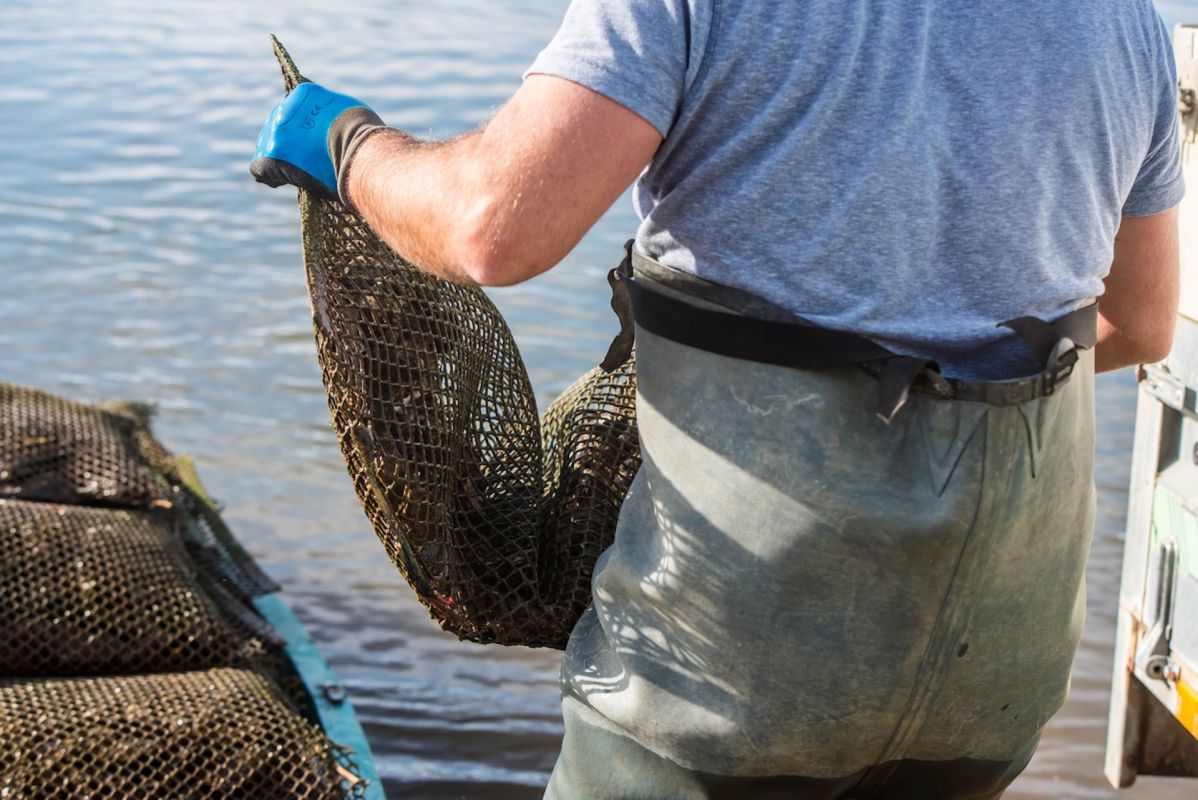For most people, retirement means relaxation and maybe even getting a little place at the beach. For Carol Friend, however, as reported by MIT Technology Review, retirement meant becoming one of 10 people in Delaware trying to make it as a cultivated oyster farmer.
Why do we have to farm oysters?
The short answer is overconsumption. While wild oyster populations once seemed limitless, decades of aggressive harvesting wreaked havoc on them.
"Harvested oysters were foundational to our early colonial development in the U.S.," marine biologist Edward Hale told the Review. "They had oyster carts the same way we have hot dog carts."
By the late '70s, Delaware's oyster population was nearly wiped out by overharvesting and parasites. According to the news outlet, the state, also facing a conflict between clammers and the oyster industry, banned oyster harvesting, killing the industry for 30 years. Now, it's hoping to reintroduce and revitalize the industry.
Why should we care about oyster farming?
Introducing aquaculture, or farming for commercial purposes, to an area — like the Port of San Diego is doing — can clean heavily polluted waters and provide jobs and other opportunities to local economies.
Hale calls oyster aquaculture the solution to the Delaware area's "historic problem."
Over the last century, fertilizer, wastewater, and other pollutants have leaked into bays from the land and groundwater. This resulted in an excess of nutrients, primarily nitrogen and phosphorus, which kill marine life through a process called eutrophication.
"I don't see any of the life down there that used to be there as a kid in the '70s," Friend told the Review.
The National Oceanic and Atmospheric Organization says that 65% of U.S. estuaries and coastlines in the contiguous U.S. have suffered, and human engineering is inadequate to filter out those contaminants.
MIT Technology Review reports that Eastern oysters can filter about 50 gallons of water daily. They also use nitrogen and phosphorus to grow their shells, which removes those nutrients from the water, too.
Additionally, oyster reefs — wild oyster clusters — can act as living barriers to protect shorelines from coastal erosion. They're so effective that one Louisiana non-profit uses recycled oyster shells to restore shoreline.
Just south of the Inland Bays is the Chesapeake, where thousands of acres of tributaries have been effectively reseeded with wild oysters, setting a great precedent.
"We see all of the habitat being colonized. The oysters are acting as the parent group for that river system, and we've seen reductions in nitrogen," Stephanie Alexander, the manager of the Horn Point Laboratory Oyster Hatchery in Maryland, told the Review.
"All in all, it's been a fantastic project," Alexander added.
How is Delaware different?
Despite its advantages, oyster aquaculture in Delaware has been plagued by troubles. Only about 7% of the water available for farming is under lease, and the number of farmers has declined since the program launched.
This is mainly due to the high price of dock-front land, which skyrocketed when the oyster industry was killed and tourism and pleasure boating took hold.
"If you could persuade some wealthy landowner to donate space for a commercial dock for us, you have no idea how much of a difference that would make," Friend said.
"It's such an abstract thing, but nitrogen and phosphorus are the big killers in the bay, and so if you have a system that just naturally removes it by just being there and filtering it, that's a net gain for the bay," Alexander added.
Join our free newsletter for cool news and cool tips that make it easy to help yourself while helping the planet.









